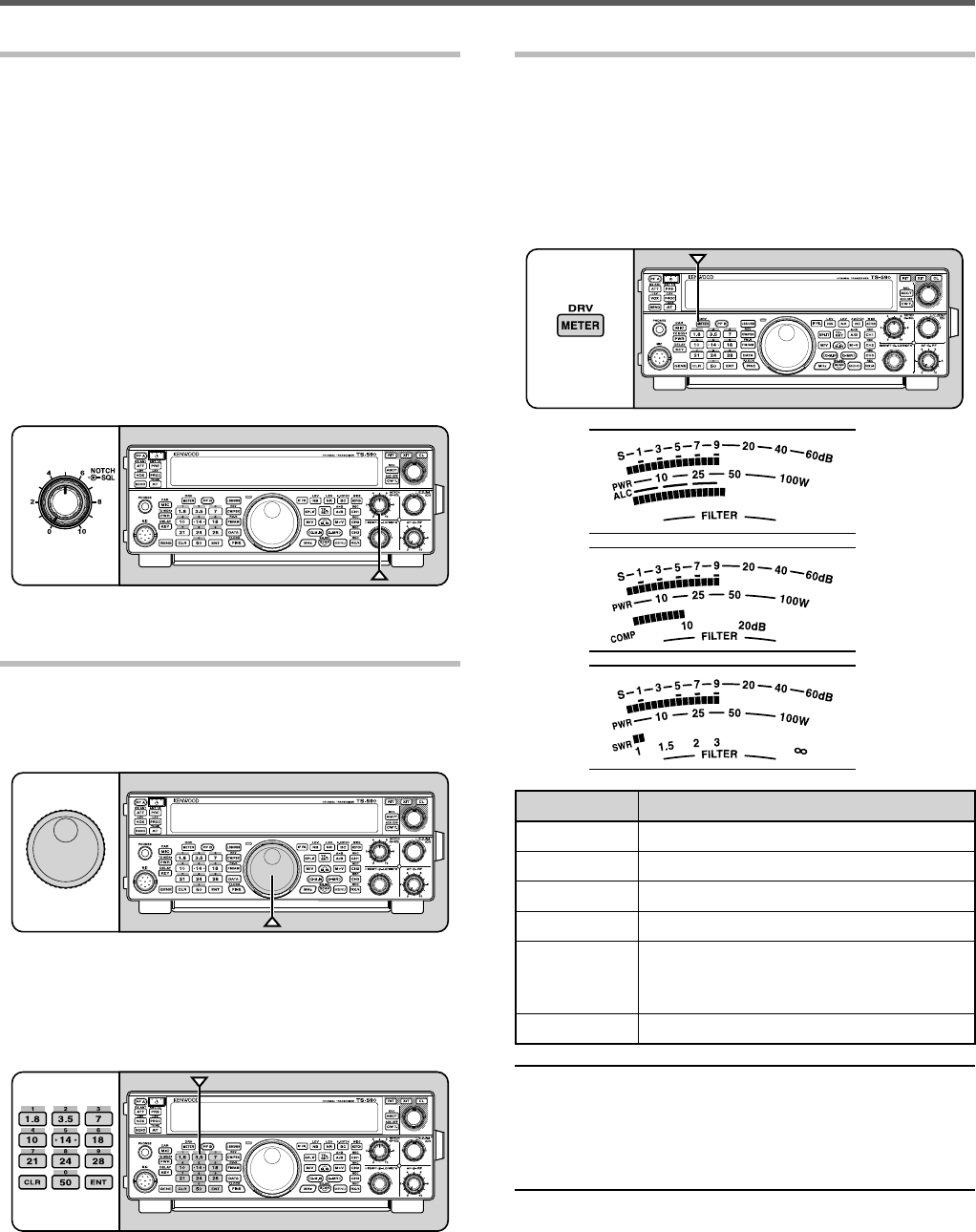
12
3 OPERATING BASICS
MULTI-FUNCTION METER
The multi-function meter measures the parameters
in the table below. The S-meter and FILTER scales
appears when the transceiver is in receive mode, and
the PWR meter appears when it is in transmit mode.
Each press of [METER (DRV)] cycles between the
ALC, COMP, and SWR meters. Peak readings for the
S-meter, ALC, SWR, COMP, and PWR functions are
held momentarily.
ALC
COMP
SWR
Meter Name Parameters Measured
S Strength of received signals
PWR Transmission output power
ALC Automatic level control status
SWR Antenna system standing wave ratio
COMP
Speech compression level when
using the Speech Processor
{page 32}
FILTER IF fi lter width {page 40}
Note:
◆ The COMP meter functions only when the Speech
Processor is ON for SSB, FM, or AM mode.
◆ Peak Hold readings cannot be deactivated.
◆ The S-meter responds differently in FM mode, compared to
other modes. This is not a malfunction.
ADJUSTING THE SQUELCH
The purpose of the Squelch is to mute the speaker
when no signals are present. With the squelch level
correctly set, you will hear sound only while actually
receiving signals. The higher the selected squelch
level, the stronger the signals must be to receive. The
appropriate squelch level depends on the ambient RF
noise conditions.
Turn the SQL control when there are no signals
present to select the squelch level at which the
background noise is just eliminated; the green TX-RX
LED will turn off. Many ham operators prefer leaving
the SQL control fully counterclockwise unless
operating on a full-carrier mode such as FM. The
squelch level for the transceiver is preset at the factory
to approximately the 9 o’clock position for FM and 11
o’clock for SSB and AM.
TUNING A FREQUENCY
Turn the Tuning control clockwise or press Mic [UP
to increase the frequency. Turn the Tuning control
counterclockwise or press Mic [DWN] to decrease the
frequency.
You may prefer directly entering a frequency using
the numeric keypad if the desired frequency is far
from the current frequency. Press [ENT], then press
the numeric keys as necessary. For details, refer to
“Direct Frequency Entry” {page 29}.


















